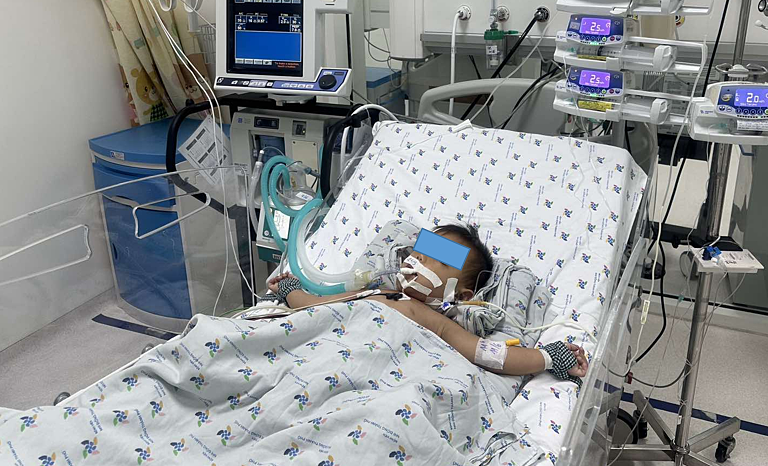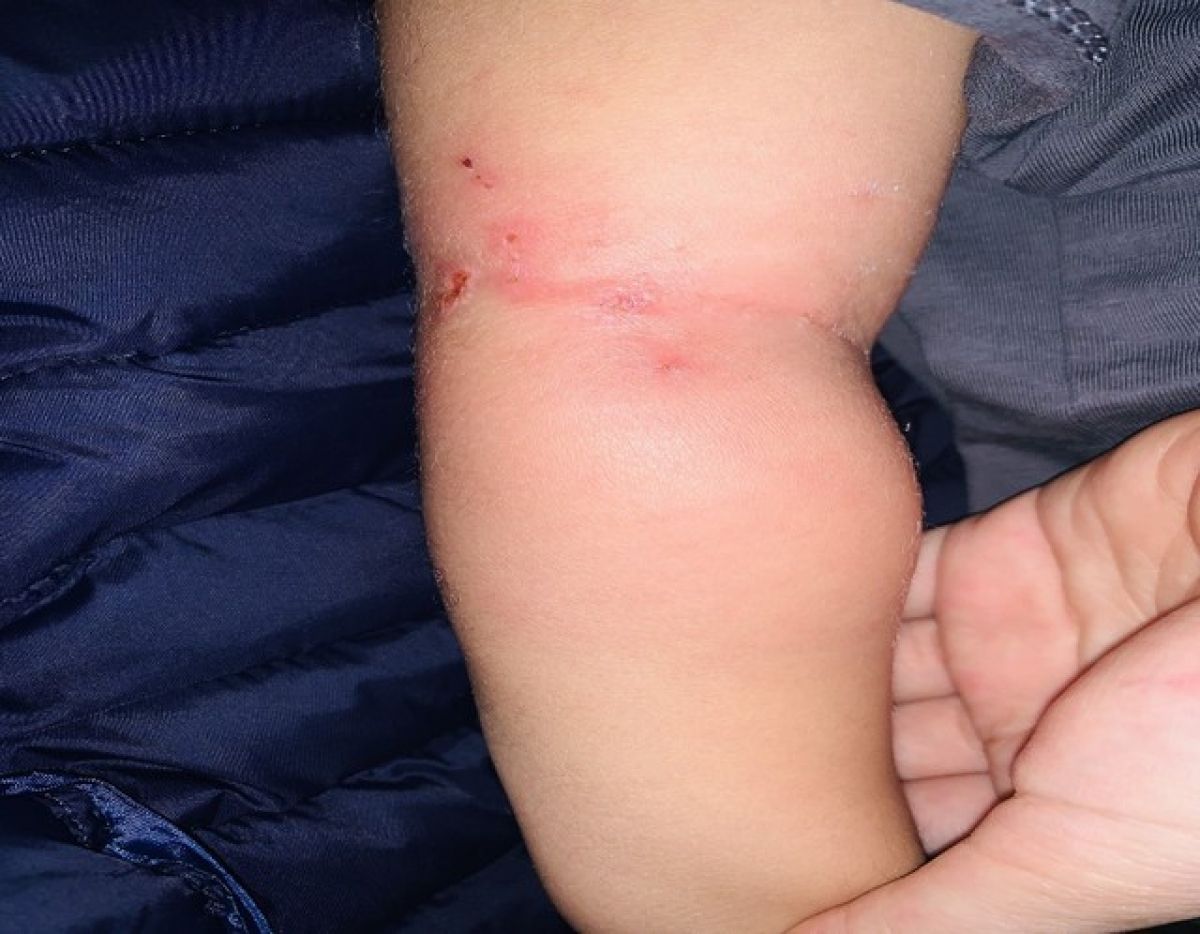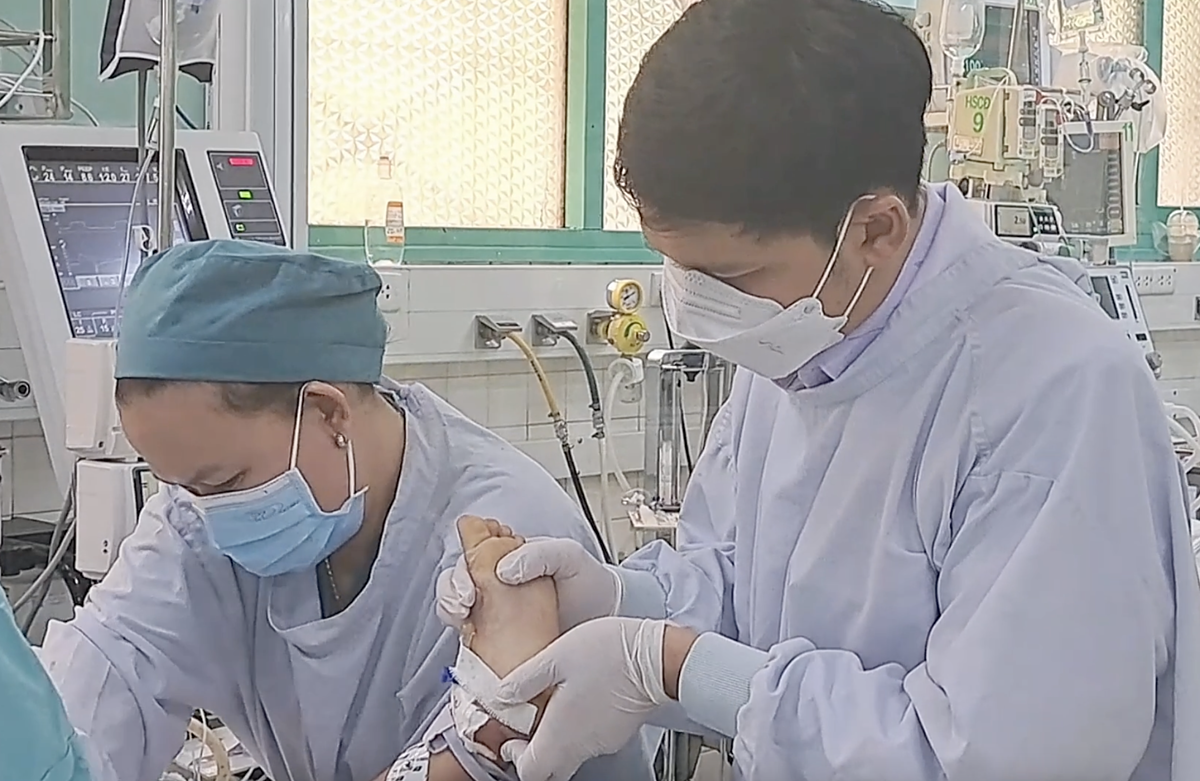Hand, foot and mouth cases increase rapidly, Ho Chi Minh City copes with the risk of outbreaks
The number of hand, foot and mouth disease cases increased by nearly 150% in the past month, many severe cases, the Department of Health of Ho Chi Minh City prepared three scenarios to deal with the risk of outbreaks.
Last week, the city recorded 423 cases of hand, foot and mouth disease, an increase in both the number of hospitalizations and the number of outpatient visits. 147 children, all under 6 years old, are being treated in hospitals. In which, 18 seriously ill children required intensive care, 14 were mechanically ventilated and one was on dialysis. To date, the city has recorded one death due to hand, foot and mouth disease.
Compared to the same period last year, the number of hand, foot and mouth disease cases has decreased by more than 53%, but the appearance of a highly pathogenic and fast-spreading strain of Enterovirus 71 that causes severe disease has made health officials concerned about the risk of an outbreak. . To cope with the situation of severe cases from grade 2a and above, which is estimated to account for about 10% of inpatients, the Department of Health has prepared three treatment scenarios.
The first scenario requires 200 beds, of which 30 are in intensive care, with less than 50 hospitalizations per day, less than 200 inpatients, and less than 20 severe cases. At that time, priority should be given to focusing on treatment at three specialized pediatric hospitals of the city.
When the number of hand, foot and mouth cases hospitalized per day increases by 50-100 cases, 200-700 cases are in inpatient treatment and 20-70 cases are severe, Ho Chi Minh City will switch to the second scenario. At that time, 700 beds (including 80 beds for intensive care) were needed, and pediatric patients were treated at three specialized pediatric hospitals and the City Hospital for Tropical Diseases.
The third scenario is expected to be implemented when 100-200 cases of hand, foot and mouth disease are admitted to the hospital per day and 700-1,400 inpatients with about 70-140 severe cases. The total number of treatment beds is 1,400 (including 150 intensive care beds). The treatment system implements the process of classifying outpatients and inpatients, and segregation to avoid overcrowding at tertiary hospitals and minimize deaths.

The Department of Health recommends that medical facilities plan drugs and infusions, medical equipment and supplies for the three scenarios above. The city's upper-level hospitals provide professional support to lower-level hospitals and other provinces in the region, avoiding unsafe transfer of diseases to the city. Doctors at all levels set up a hotline for consultation and decision to transfer.
The problem that the Department of Health is concerned about is that serious patients are moving from the provinces, while the drug supply in the city is limited. At the beginning of June, the Department of Health requested the Drug Administration of Vietnam (Ministry of Health) to assist in sourcing the drug and it is expected that the drug will be available in July.
Hand, foot and mouth disease is an acute viral infection, transmitted by the gastrointestinal tract, common in children under 5 years of age and has the potential to cause large epidemics. Signs are fever, sore throat, lesions of the oral mucosa and skin, mainly in the form of blisters on the palms, soles, knees, buttocks. Most patients have a mild course. Some cases of serious illness and dangerous complications such as meningitis, blood infection, can lead to death.
Prevention measures are to clean toys for children, clean the house with soap, Javel solution or common antiseptic solutions. Early detection of signs of hand, foot and mouth disease in children to promptly isolate and limit the spread. Severe signs such as high fever continuously difficult to lower, vomiting a lot, startling, shaking hands and feet, then the child should be taken to the hospital immediately.
* SOURCE: https://vnexpress.net/ca-tay-chan-mieng-tang-nhanh-tp-hcm-ung-pho-nguy-co-bung-dich-4619065.html









 Facebook
Facebook
 Tweet
Tweet
 Zalo
Zalo







 News
News

















 Sign in with Facebook
Sign in with Facebook
 Sign in with Google
Sign in with Google